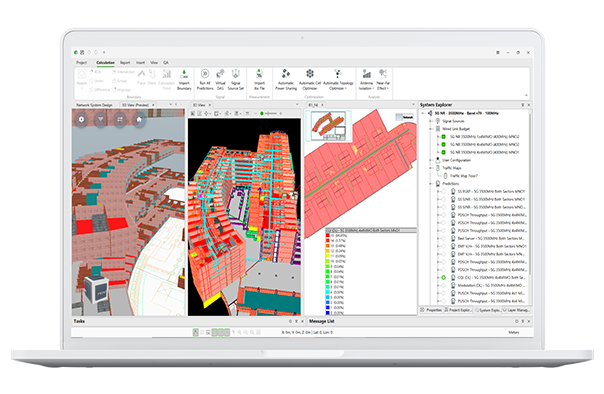What Is Open RAN (ORAN)?
Open RAN (ORAN) stands for Open Radio Access Network. It is a game-changing approach to designing and deploying mobile network infrastructure. Traditionally, mobile networks have been built using closed and integrated systems, where the Radio Access Network (RAN) components, such as base stations and radio units, come from the same vendor and work together as a proprietary solution.
However, with Open RAN, the network architecture is based on open and standardized interfaces, allowing network operators to use equipment and software from different vendors. In other words, it promotes interoperability and vendor neutrality, enabling network operators to select the best-of-breed components and mix-and-match equipment from various suppliers to create a cohesive and flexible network.
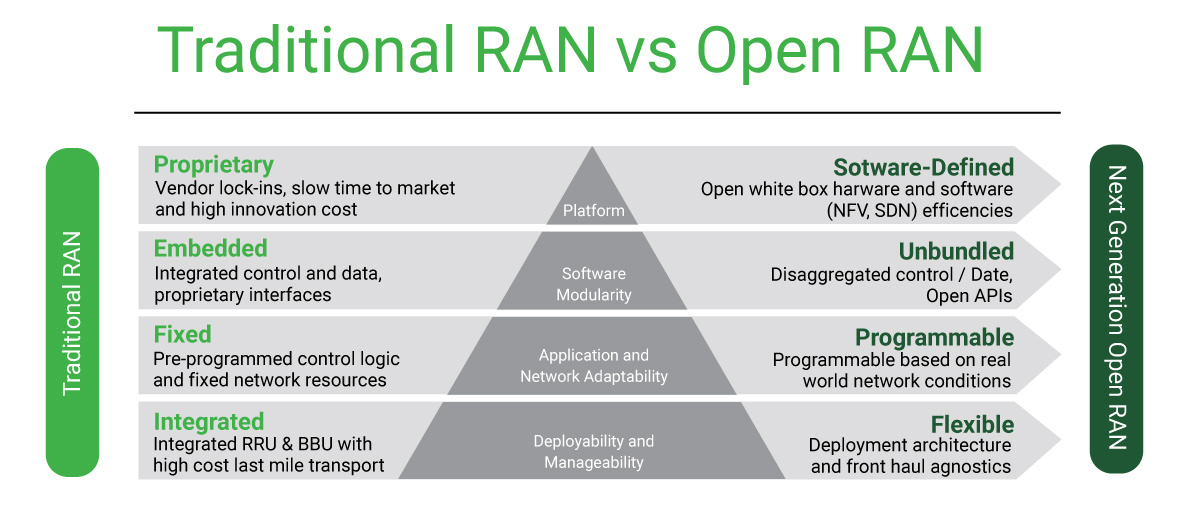 The open and standardized approach of Open RAN fosters industry collaboration, drives competition, and encourages the development of innovative technologies and solutions. It is seen as a crucial enabler for advancing 5G networks and beyond, offering greater flexibility and opening the doors to a more diverse and competitive telecommunications landscape.
The open and standardized approach of Open RAN fosters industry collaboration, drives competition, and encourages the development of innovative technologies and solutions. It is seen as a crucial enabler for advancing 5G networks and beyond, offering greater flexibility and opening the doors to a more diverse and competitive telecommunications landscape.
Exploring the Fundamental Principles and Components of ORAN
Open RAN (ORAN) is reimagining the fundamental principles and components of the traditional Radio Access Network (RAN) system. At its core, Open RAN is built on virtualisation and disaggregation principles, allowing for greater flexibility, scalability, and cost efficiency in network operations, which traditional RAN architectures struggle to achieve.
Virtualization in Open RAN refers to the decoupling of network functions from dedicated hardware and running them on flexible hardware. This means that instead of relying on proprietary equipment from a single vendor, network operators can now choose the top-performing and/or in-budget components from different vendors and integrate them seamlessly into their network. This not only promotes competition and innovation but also breaks down the barriers of vendor restriction, giving network operators the freedom to create a diverse vendor ecosystem.
Disaggregation in Open RAN involves breaking down the traditionally integrated RAN components into modular, interoperable elements. This allows for the separation of hardware and software components, enabling network operators to upgrade or replace individual components without disrupting the entire network. For example, operators can simply upgrade the software or hardware module responsible for a specific function instead of replacing an entire base station, resulting in significant cost savings, and increased operational efficiency.
The components of Open RAN encompass a range of hardware and software elements. On the hardware side, these include Remote Radio Units (RRUs), Distributed Units (DUs), and Centralized Units (CUs). RRUs are responsible for transmitting and receiving wireless signals, DUs handle baseband processing, and CUs handle network coordination and management. On the software side, Open RAN uses open interfaces and protocols, such as Open Radio Interface (ORI) and Open Fronthaul Interface (OFI), to ensure interoperability between different vendor components.
Challenges and Limitations of Open RAN
As promising as Open RAN may be, it is not without its challenges and limitations. One of the main obstacles is the lack of mature and standardized interfaces. However, the industry is still in the infancy of defining these interfaces, which can hinder the seamless integration of equipment from different vendors. Additionally, the disaggregation of RAN components can introduce network management and coordination complexity. Operators will need to invest in new tools, training, and processes to effectively manage and troubleshoot a disaggregated network.
Furthermore, the performance and scalability of Open RAN solutions need to be thoroughly tested and optimized to ensure they can handle the demands of large-scale deployments. Despite these challenges, the industry is actively working towards addressing them through collaboration and standardization efforts. With continued advancements and refinement, Open RAN has the potential to overcome these limitations and reform the telecommunications industry.
Planning ORAN networks using network planning software
Ranplan Professional, a leading network planning software, offers operators a powerful tool to accurately model their ORAN deployments to find the best network topology and the most efficient and cost-effective network design.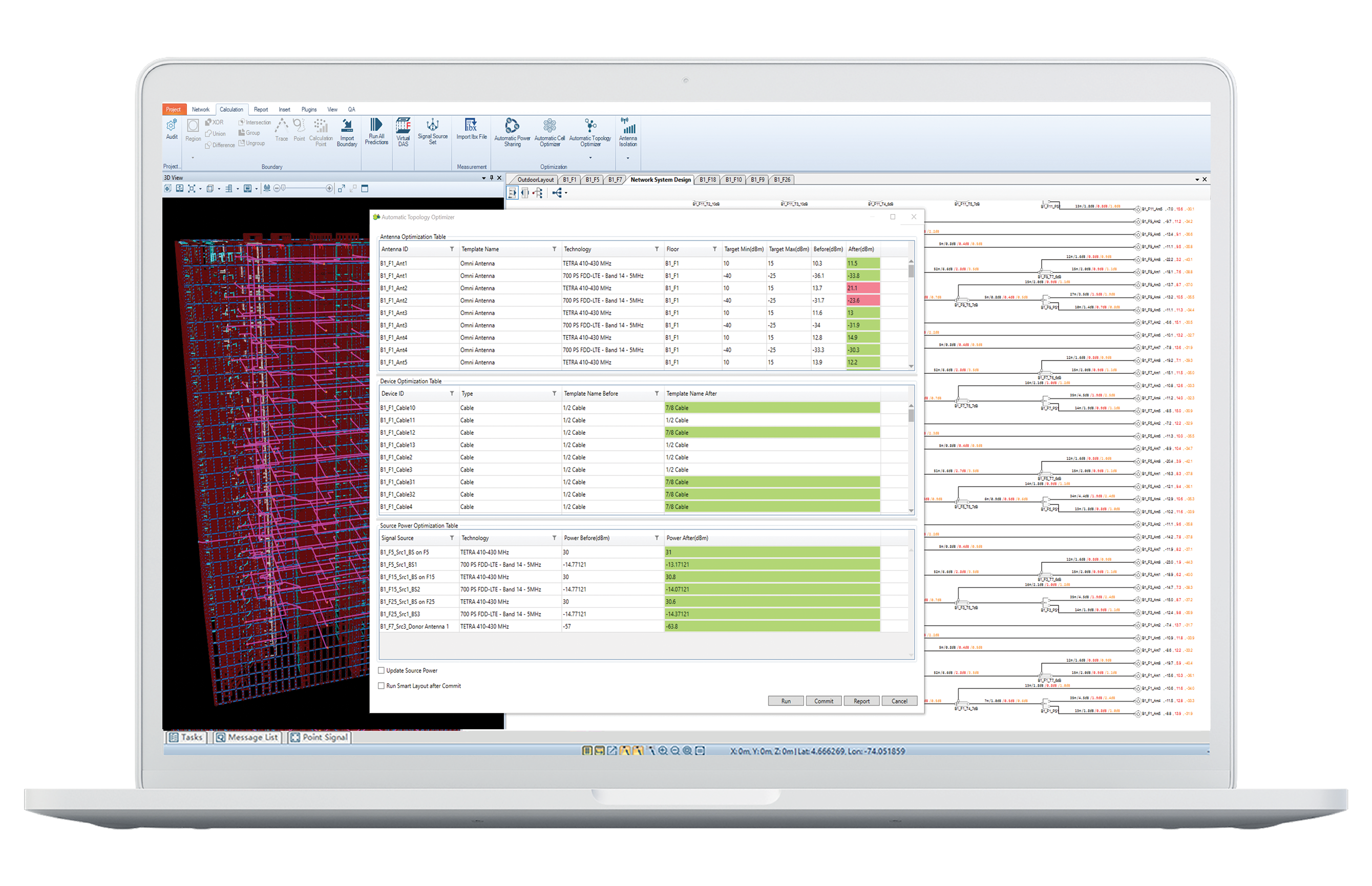 Operators looking to deploy ORAN equipment in a new environment or as a replacement to existing network infrastructure now have a powerful tool at their disposal. Ranplan’s Device Hub provides operators with an extensive database of pre-modelled ORAN devices from different vendors for true network simulation and evaluation.
Operators looking to deploy ORAN equipment in a new environment or as a replacement to existing network infrastructure now have a powerful tool at their disposal. Ranplan’s Device Hub provides operators with an extensive database of pre-modelled ORAN devices from different vendors for true network simulation and evaluation.
One key advantage of using Ranplan is its vendor neutrality, which provides operators with an unbiased representation for comparing device and solution metrics. This impartiality allows operators to make informed decisions based on objective evaluations, selecting the most suitable components for their ORAN deployment. By leveraging the capabilities of network planning software, operators can confidently plan their ORAN deployments and maximize the benefits of this progressive approach to network architecture. Whether it is for an in-building or outdoor deployment or a replacement of existing infrastructure, network planning software is an invaluable tool for operators embarking on their ORAN journey.
The Benefits of AI for Open RAN network design
Accurate AI-powered RF modelling has become a cornerstone of planning and optimizing ORAN networks. By simulating different scenarios and considering factors such as coverage and capacity, operators can leverage AI to make informed decisions about their ORAN deployment, maximizing the benefits of this innovative approach. Additionally, by precisely modelling latency from the core to user equipment, operators can effectively implement network slicing for 5G services such as Ultra-Reliable, Low Latency Communication (URLLC).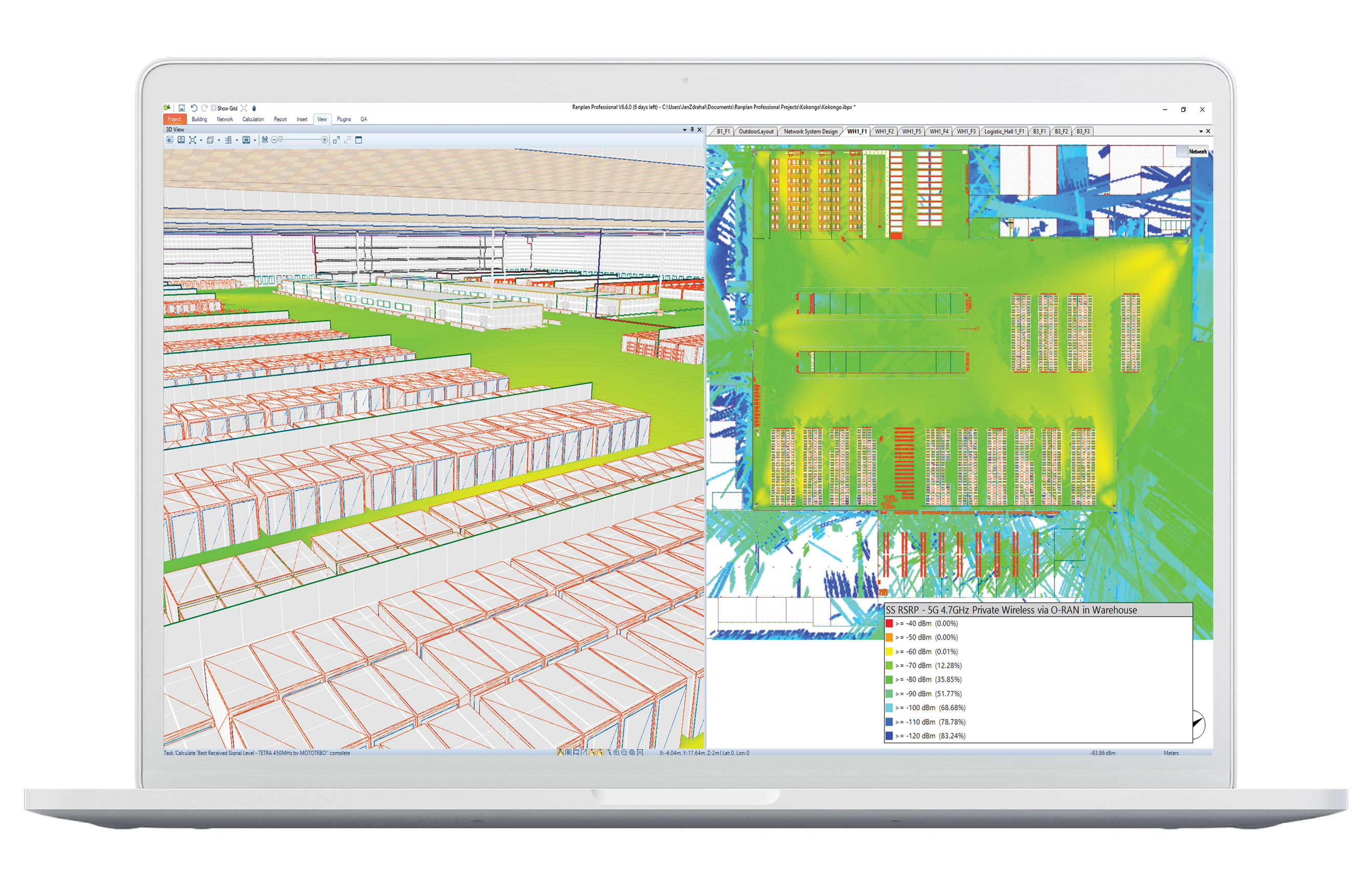 While ORAN faces challenges such as the lack of standardized interfaces and the complexity introduced by disaggregated network components, network planning software like Ranplan Professional can help operators overcome these obstacles and optimize their ORAN networks.
While ORAN faces challenges such as the lack of standardized interfaces and the complexity introduced by disaggregated network components, network planning software like Ranplan Professional can help operators overcome these obstacles and optimize their ORAN networks.
Ranplan Professional offers a variety of automatic building modelling functionality, making it easier for users to model the environment. Whether users have a raster background or a 3D CAD/Mesh file format, Ranplan uses AI-based tools to intelligently recognize and rebuild the building structure automatically, significantly saving modelling time.
The software’s automatic network design tools, such as the Automatic Cell Optimizer (ACO) are instrumental in streamlining the network design process. Operators can define candidate devices and locations while specifying network requirements such as coverage, throughput, interference, latency, and reliability. By leveraging this functionality, the software generates the most cost-efficient network solution that aligns with the defined requirements. Additionally, the Connection Assistant function further streamlines the network design process by automatically connecting selected devices with cables, saving valuable time.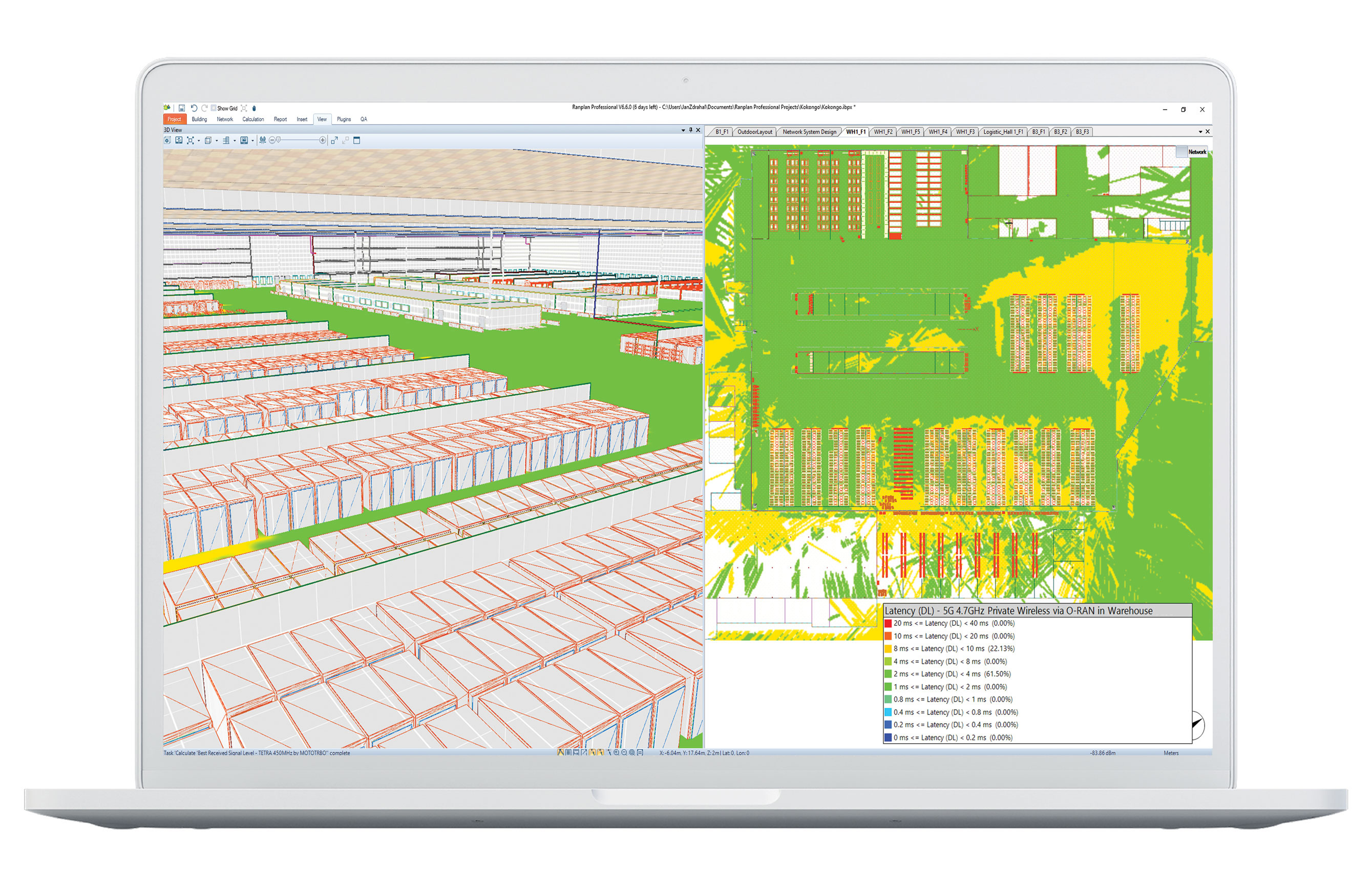 In summary, Ranplan Professional is a comprehensive network planning software empowering operators to precisely model and optimize ORAN deployments. With its AI-powered RF modelling capabilities, automatic building modelling, and efficient network system design tools, the software empowers operators to overcome challenges, enhance network efficiency, and shape the future of ORAN and connectivity in the telecommunications industry.
In summary, Ranplan Professional is a comprehensive network planning software empowering operators to precisely model and optimize ORAN deployments. With its AI-powered RF modelling capabilities, automatic building modelling, and efficient network system design tools, the software empowers operators to overcome challenges, enhance network efficiency, and shape the future of ORAN and connectivity in the telecommunications industry.




